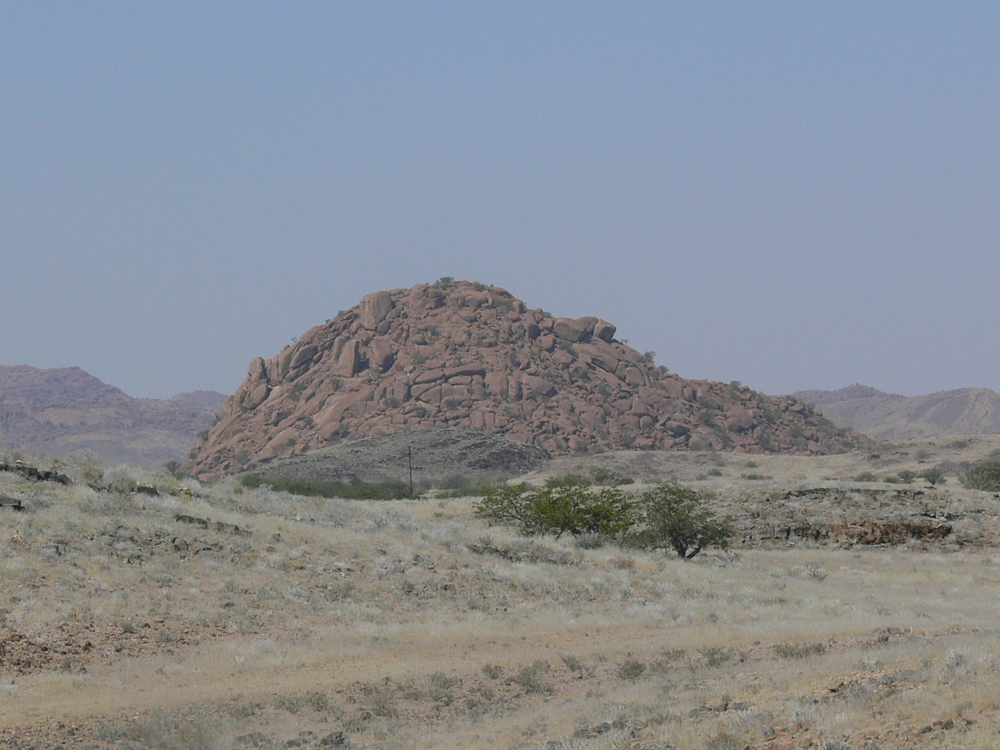Weird, Bumpy Landscape in African Desert Explained by Ancient Ice Stream
About 300 million years ago, southern Africa was covered in ice. Now, scientists have found traces of an ancient ice stream in the hills of the desert region.
On a journey through the deserts of northern Namibia, two geologists discovered hills that were shaped in a way that looked like they had been eroded by glaciers.
Indeed, these structures turned out to be drumlins — a type of egg-shaped hill that is often found beneath glaciers — and whalebacks and megawhalebacks, which are their larger, more elliptical counterparts. [Photos: Traces of an Ancient Ice Stream]
They reported their findings online Jan. 30 in the journal PLOS ONE.

"We visited Namibia to do a completely different study that turned out to be a bust," said co-author Graham Andrews, a geologist at West Virginia University. Andrews was traveling with his wife, Sarah Brown, who is also a geologist at West Virginia University. "We were basically killing time at the end of our trip visiting other geology when we came across the drumlins and whalebacks."
On foot and in their car, they saw about six or seven of these structures.
Both geologists were familiar with such structures, since Andrews grew up near a drumlin in Northern Ireland, and Brown frequently saw them in Illinois and Wisconsin. "So the shapes just struck me as 'off' in Namibia, but strangely familiar, too," Andrews told Live Science.
Sign up for the Live Science daily newsletter now
Get the world’s most fascinating discoveries delivered straight to your inbox.
These observations on foot and their "gut feelings" spurred them to study the structures after returning to the lab in West Virginia. There, their students, Shannon Maynard and Andrew McGrady, looked at the bumpy scape in satellite images from Google Earth; they figured out the shapes and dimensions of the hills that made up one expanse in Namibia. They then compared these measurements with published data on whalebacks and megawhalebacks in Scotland and Canada.
That’s when they saw that there were so many of them — around 100 — that formed their own distinct "field.”
The drumlins stood out because, when viewed from above, they looked like the outline of an egg. The "whalebacks" are larger and more elliptical than drumlins in this aerial view. The largest and even more elongated ones at the site are called "megawhalebacks."
All of them had these large grooves etched into them, which could have only been shaped by something fast moving (not by glaciers themselves, which seasonally melt and then grow). The culprit: ancient ice streams, which are flows of ice that move much faster than a surrounding glacier does, comparable to those seen in Antarctica today, the team reported.
The fast-flowing ice would have carved a path through the surface of Namibia some 300 million years ago, piling the carved-out material into various formations. In the intervening time, these formations — drumlins and megawhalebacks — were buried under hundreds of thousands of rocks. As more time passed, erosion peeled away all of those concealing rocks, re-exposing the telltale structures, Andrews said.
Though scientists knew the area was once covered in ice, no one had documented these eroded hills before, Andrews said. As to why, "my guess is that most geologists looked for new rocks made by the glaciers, and not for how the glaciers sculpted older, pre-existing rocks," he said.
Based on the location and orientation of these structures, the team concluded that the ice stream likely flowed toward the northwest into shallow waters in modern Brazil, the team reported.
In fact, the drumlins and whalebacks are similar to glacial features in modern Brazil that date back to the same time, Andrews said. Their findings further confirm that southern Africa was joined with South America and sat over the South Pole during this late Paleozoic age.
- World's Weirdest Geological Formations
- In Photos: Excavating a Mysterious Ancient Structure
- In Images: Mysterious Desert Varnish
Originally published on Live Science.

Yasemin is a staff writer at Live Science, covering health, neuroscience and biology. Her work has appeared in Scientific American, Science and the San Jose Mercury News. She has a bachelor's degree in biomedical engineering from the University of Connecticut and a graduate certificate in science communication from the University of California, Santa Cruz.









